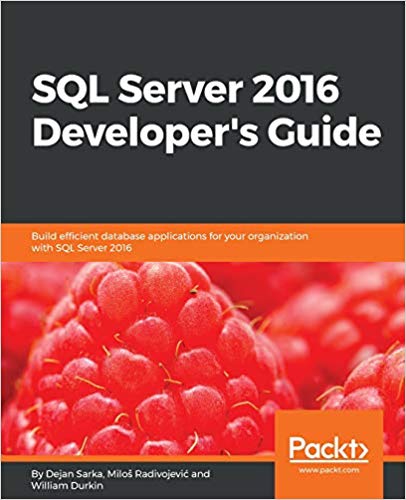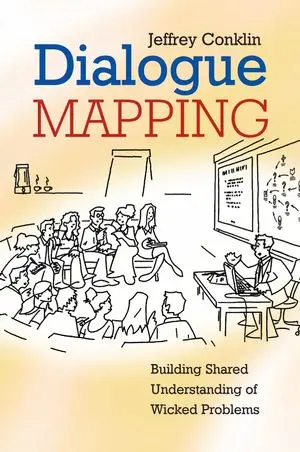Get the most out of the rich development capabilities of SQL Server 2016 to build efficient database applications for your organization
Key Features
- Utilize the new enhancements in Transact-SQL and security features in SQL Server 2016 to build efficient database applications
- Work with temporal tables to get information about data stored in the table at any point in time
- A detailed guide to SQL Server 2016, introducing you to multiple new features and enhancements to improve your overall development experience
Book Description
Microsoft SQL Server 2016 is considered the biggest leap in the data platform history of the Microsoft, in the ongoing era of Big Data and data science. Compared to its predecessors, SQL Server 2016 offers developers a unique opportunity to leverage the advanced features and build applications that are robust, scalable, and easy to administer.
This book introduces you to new features of SQL Server 2016 which will open a completely new set of possibilities for you as a developer. It prepares you for the more advanced topics by starting with a quick introduction to SQL Server 2016's new features and a recapitulation of the possibilities you may have already explored with previous versions of SQL Server. The next part introduces you to small delights in the Transact-SQL language and then switches to a completely new technology inside SQL Server - JSON support. We also take a look at the Stretch database, security enhancements, and temporal tables.
The last chapters concentrate on implementing advanced topics, including Query Store, columnstore indexes, and In-Memory OLTP. You will finally be introduced to R and how to use the R language with Transact-SQL for data exploration and analysis.
By the end of this book, you will have the required information to design efficient, high-performance database applications without any hassle.
What you will learn
- Explore the new development features introduced in SQL Server 2016
- Identify opportunities for In-Memory OLTP technology, significantly enhanced in SQL Server 2016
- Use columnstore indexes to get significant storage and performance improvements
- Extend database design solutions using temporal tables
- Exchange JSON data between applications and SQL Server in a more efficient way
- Migrate historical data transparently and securely to Microsoft Azure by using Stretch Database
- Use the new security features to encrypt or to have more granular control over access to rows in a table
- Simplify performance troubleshooting with Query Store
- Discover the potential of R's integration with SQL Server
Table of Contents
- Introduction to SQL Server 2016
- Review of SQL Server Features for Developers
- SQL Server Tools
- Transact-SQL Enhancements
- JSON Support in SQL Server
- Stretch Database
- Temporal Tables
- Tightening the Security
- Query Store
- Columnstore Indexes
- Introducing SQL Server In-Memory OLTP
- In-Memory OLTP Improvements in SQL Server 2016
- Supporting R in SQL Server
- Data Exploration and Predictive Modeling with R in SQL Server
چکیده فارسی
از قابلیت های توسعه غنی SQL Server 2016 حداکثر بهره را ببرید تا برنامه های پایگاه داده کارآمد را برای سازمان خود بسازید
ویژگی های کلیدی
- از پیشرفتهای جدید در Transact-SQL و ویژگیهای امنیتی در SQL Server 2016 برای ساخت برنامههای پایگاه داده کارآمد استفاده کنید
- با جداول زمانی کار کنید تا اطلاعاتی در مورد داده های ذخیره شده در جدول در هر مقطع زمانی بدست آورید
- راهنمای دقیق SQL Server 2016 که شما را با چندین ویژگی جدید و پیشرفتها برای بهبود تجربه توسعه کلی خود آشنا میکند
شرح کتاب
Microsoft SQL Server 2016 به عنوان بزرگترین جهش در تاریخ پلتفرم داده مایکروسافت، در عصر کنونی Big Data و علم داده در نظر گرفته می شود. SQL Server 2016 در مقایسه با نسخههای قبلی خود، فرصتی منحصر به فرد برای توسعهدهندگان برای استفاده از ویژگیهای پیشرفته و ساخت برنامههای کاربردی قوی، مقیاسپذیر، و مدیریت آسان ارائه میدهد.
این کتاب شما را با ویژگی های جدید SQL Server 2016 آشنا می کند که مجموعه ای کاملاً جدید از امکانات را برای شما به عنوان یک توسعه دهنده باز می کند. با شروع با معرفی سریع ویژگیهای جدید SQL Server 2016 و خلاصهای از احتمالاتی که ممکن است قبلاً با نسخههای قبلی SQL Server بررسی کرده باشید، شما را برای موضوعات پیشرفتهتر آماده میکند. قسمت بعدی شما را با لذت های کوچک در زبان Transact-SQL آشنا می کند و سپس به یک فناوری کاملاً جدید در SQL Server - پشتیبانی JSON تغییر می کند. ما همچنین نگاهی به پایگاه داده Stretch، پیشرفتهای امنیتی و جداول زمانی میاندازیم.
فصلهای آخر بر پیادهسازی موضوعات پیشرفته، از جمله Query Store، فهرستهای فروشگاه ستون، و OLTP درون حافظه تمرکز دارند. در نهایت با R و نحوه استفاده از زبان R با Transact-SQL برای کاوش و تجزیه و تحلیل داده ها آشنا خواهید شد.
در پایان این کتاب، اطلاعات مورد نیاز برای طراحی برنامه های پایگاه داده کارآمد و با کارایی بالا بدون هیچ دردسری را خواهید داشت.
آنچه یاد خواهید گرفت
- ویژگی های توسعه جدید معرفی شده در SQL Server 2016 را کاوش کنید
- شناسایی فرصتها برای فناوری OLTP درون حافظه که به طور قابل توجهی در SQL Server 2016 بهبود یافته است
- از فهرستهای فروشگاه ستونی برای دریافت بهبودهای قابل توجه فضای ذخیرهسازی و عملکرد استفاده کنید
- راه حل های طراحی پایگاه داده را با استفاده از جداول زمانی گسترش دهید
- دادههای JSON را بین برنامهها و SQL Server به روشی کارآمدتر مبادله کنید
- با استفاده از Stretch Database داده های تاریخی را به صورت شفاف و ایمن به Microsoft Azure منتقل کنید
- از ویژگیهای امنیتی جدید برای رمزگذاری یا کنترل دقیقتر دسترسی به ردیفهای جدول استفاده کنید
- عیبیابی عملکرد را با Query Store ساده کنید
- پتانسیل ادغام R با SQL Server را کشف کنید
فهرست محتوا
- معرفی SQL Server 2016
- بررسی ویژگی های SQL Server برای توسعه دهندگان
- ابزارهای سرور SQL
- Transact-SQL Enhancements
- پشتیبانی از JSON در SQL Server
- کشش پایگاه داده
- جدول زمانی
- تقویت امنیت
- فروشگاه پرس و جو
- شاخصهای Columnstore
- معرفی SQL Server In-Memory OLTP
- بهبودهای OLTP در حافظه در SQL Server 2016
- پشتیبانی از R در SQL Server
- کاوش داده و مدلسازی پیشبینی با R در SQL Server
ادامه ...
بستن ...
Ebook details:
عنوان: SQL Server 2016 Developer's Guide: Build efficient database applications for your organization with SQL Server 2016
نویسنده: Dejan Sarka, Milos Radivojevic, William Durkin
ناشر: Packt Publishing (March 22, 2017)
زبان: English
شابک: 1786465345, 978-1786465344
حجم: 14 Mb
فرمت: True Pdf
ادامه ...
بستن ...









![Clinical Management of Swallowing Disorders (6th Edition) [2025] - Orginal Pdf Clinical Management of Swallowing Disorders (6th Edition) [2025] - Orginal Pdf](https://dl.libsan.ir/images/1/12/Clinical Management of Swallowing Disorders_68fdc2997972e.webp)
